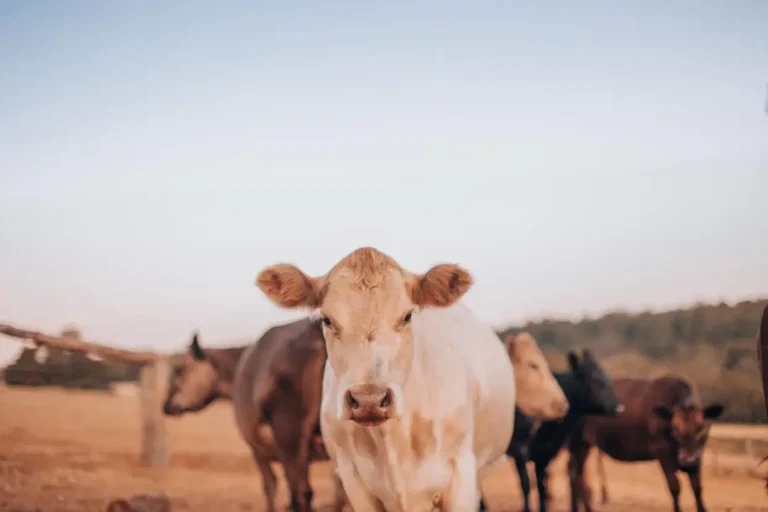Precision fermentation and cellular agriculture are often presented as part of the same technological shift away from conventional animal farming. In practice, they are very different approaches – and they are progressing at very different speeds. Both could have implications for livestock and feed producers, as well as for wider food system infrastructure. In this Q&A, Farming Future Food explains the differences between the two technologies, how close they are to commercial scale, and what they could mean in practical terms for existing farm businesses.
What is precision fermentation and how does it work?
Precision fermentation uses engineered microorganisms, such as yeast or bacteria, to produce specific proteins or fats. These are grown in industrial-scale fermentation tanks and then purified. Crucially, precision fermentation does not attempt to produce whole food products – instead it produces individual ingredients such as dairy proteins, egg proteins or enzymes, which are later incorporated into finished food products.
How is cellular agriculture different?
Cellular agriculture goes further by growing whole animal tissues directly from animal cells. Instead of engineering microbes, it cultivates muscle and fat cells in a culture medium inside a bioreactor. The aim is to produce a complete food (e.g. a piece of meat) without farming an animal. The technical challenges are much higher – the cells need to grow in three dimensions and the structure must replicate conventional meat.
Which technology is closer to being commercially viable?
Precision fermentation is already in commercial use. Dairy ingredients made using this method are used in food products in the United States and parts of Asia. The technology is now scaling and is likely to move into wider categories such as fats or flavour compounds.
Cellular agriculture, by contrast, is still at pilot stage. Limited sales of cultivated meat have begun in Singapore and the US, but volumes are extremely small and the production cost remains far above conventional meat.
Are there likely to be implications for livestock and feed producers?
In the short term, precision fermentation is more likely to affect ingredient supply chains than whole animal production. Larger volumes of microbial dairy or egg proteins may gradually displace a portion of commodity supply, particularly for processed foods. For cellular agriculture, most analysts believe it will be many years before volumes reach a level where they pose direct competition to conventional meat production. Some researchers have suggested that cultivated meat could eventually create new domestic feed markets, if low-cost feedstocks (for the growth media) can be sourced from agricultural by-products.
Does one use more energy or resources than the other?
Precision fermentation is currently more efficient in terms of energy use per kilogram of output, because it produces concentrated proteins rather than whole tissue. Cellular agriculture still requires expensive nutrient media, high levels of energy for temperature control and significant infrastructure investment. Long-term projections suggest those costs could fall, but only if the technology scales successfully.
How are investors and the market responding to both sectors?
Investment has shifted heavily toward precision fermentation because of its shorter development horizons and clearer regulatory pathway. Cellular agriculture still attracts capital at early stage, but most investors expect the timeline to commercial viability to be longer. From the farming sector’s perspective, this means precision fermentation is more likely to enter the mainstream in the near term – particularly as larger food companies start to incorporate those ingredients into their supply chains.
Are these technologies expected to replace conventional farming?
No – current thinking is that precision fermentation will supply functional ingredients into the market, particularly where traditional production is constrained or costly, and that cellular agriculture, if it matures, will sit alongside conventional meat production in a diversified protein sector. Conventional farming is still expected to provide the bulk of total calories in the medium term, but may face greater competition for specific categories (such as speciality dairy proteins or high-value animal fats) as these technologies scale.
Key takeaways
- Precision fermentation produces specific ingredients (e.g. dairy proteins) using engineered microbes; cellular agriculture cultivates whole animal tissues from cells.
- Precision fermentation is already at commercial scale and being used in food supply chains, while cellular agriculture remains at pilot and demonstration stage.
- In the short term, precision fermentation is more likely to impact ingredient markets than whole-animal production.
- Cellular agriculture faces higher technical and cost barriers, but could create new opportunities for agricultural by-products as feedstocks if it scales.
- Most analysts expect both technologies to coexist alongside conventional farming, rather than replace it, within a more diversified future protein system.











